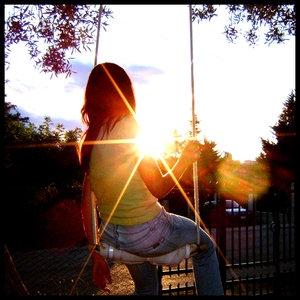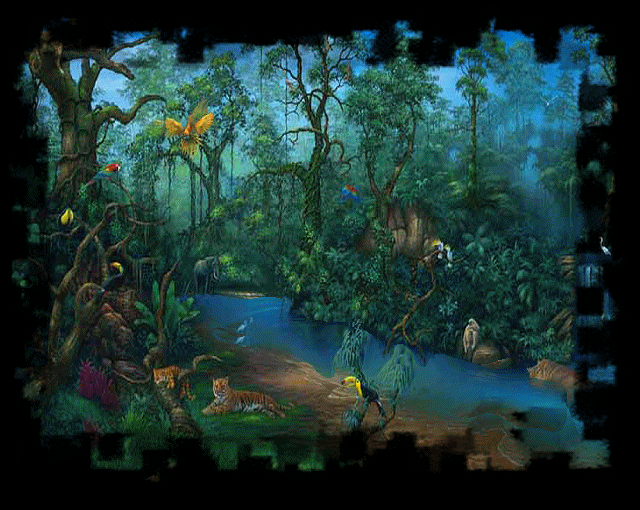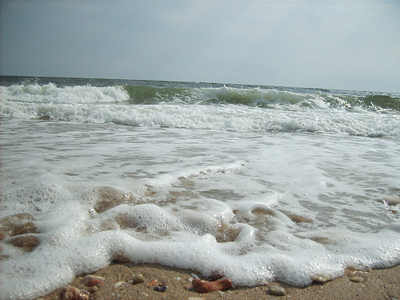This is a brief background of a legendary composer,singer,director and actor in Malaysia film world. I enjoyed his shows very much simply because the songs are beautiful, simple story,full of jokes and skill in presentation by assimilation of so many cultural background making one feel that it is part of reality and not just a show! :
The Golden Age Of Malay Cinema
"Actually this business has a lot of fun, a lot of excitement, All depends on whether your judgement is right or judgement is wrong. If judgement is right, you make the money. Judgement is wrong, you lose all the money" - Tan Sri Runme Shaw, Pioneers of Singapore, Oral History
After the war, film production picked up again, not only all over Asia but also in Singapore where both Chinese and Malay films were made. In 1947, 'Seruan Medeka', an effort by Film Melayu Art Productions, proved to be mildly successful. This prompted the Shaws to reopen their pre-war studio at No.8, Jalan Ampas (above) to produce Malay movies. Under the banner of 'Malay Film Production Limited' (MFP), the Shaws aimed to dominate the Malay film market with quality productions. This move ushered in the period known as 'The Golden Age of Malay Cinema' during which over 300 films were produced.
At first, the Shaws used Chinese directors to make Malay movies. They were replaced by Indians because Malays tended to prefer Indian directorial style. Malays also favoured Indian films because they could relate to both plot and culture. The 'Bollywood' song and dance style in Malay movies were enjoyed not only by Malays but also many Singaporean Chinese. Shaws' stable of Indian directors for the next two decades read like a who's-who of Malay cinema - B.S. Rajhans, S.Ramanathan, L. Krishnan, KRS Shastry, Phani Majumdar, Kidar Sharma, Dhiresh Ghosh, K.M. Basker and B.N. Rao.
In 1947, MFP's first film 'Singapura Di-Waktu Malam' starring Siput Sarawak proved an instant success. It was directed by the same man who made Singapore's first feature hit in 1933 - B.S. Rajhans.
B.S. Rajhans quickly followed his success with a string of hits over the next four years. They included Chempaka (1947), Pisau Berachun (1948) and Cinta (1948). In Cinta, he gave the part of the villain to a young unknown whom he discovered at a music festival in Bukit Mertajam. This 19-year old playback singer who provided the vocals for the lead actor Roomai Noor was to become a legend in his own time. He was P. Ramlee.
he Legendary Tan Sri P.Ramlee (1929-1973)
In his early years at Jalan Ampas, P.Ramlee was enthusiastic about mastering all aspects of film production. No task proved too menial for him, and he worked even as clapper boy and assistant cameraman. From the start, his remarkable talents were recognised by the Shaws.
In 1950, P.Ramlee graduated from playing 'villians' to 'hero' and became the first actor to sing in his own voice in the movie 'Bakti'. In this film, he acted opposite the beautiful Kasma Booty (right) and proved beyond doubt that he had all the qualities of a star who could not only act but sing.
By 1953, MFP faced competition from the newly formed Cathay-Keris, a studio formed by cinema owner Ho Ah Loke and Cathay Organisation's chairman Dato Loke Wan Tho. They offered lucrative financial contracts to attract experienced film crew and stars to their new studio on the East Coast. 'Buloh Perindu' (1953) was a Malay film made by them in colour.
In order to stay ahead, the Shaws made the 26-year-old P. Ramlee into director fresh from his hit starrer 'Hang Tuah' in 1955. By that time, P.Ramlee was already an accomplished songwriter and actor, but he was keen to prove that Malay directors were as capable as Indians in making high quality films.
The result was 'Penarik Beca' (right), an award-winning film which catapulted the Malay film industry to an international level. It won Best Picture and Best Song in a readers' poll of the prestigious "Utusan Filem and Sport" magazine.
For the next 20 years, the multi-talented Tan Sri P.Ramlee was to win multiple international awards (including film festivals in Hong Kong and Japan) for work which spanned over 70 films and 200 songs.
His films encompassed different genres, the reason for winning fans of all races and generations. Any P.Ramlee film was guaranteed to fill seats and he became king of the Malay box office. In 1963, Singapore became part of Malaysia. That same year, P.Ramlee made his last film at Jalan Ampas - Tiga Abdul (right) - and then he went to Merdeka studios in KL.
================ http://www.shaw.sg/ ================================
The Golden Age Of Malay Cinema
"Actually this business has a lot of fun, a lot of excitement, All depends on whether your judgement is right or judgement is wrong. If judgement is right, you make the money. Judgement is wrong, you lose all the money" - Tan Sri Runme Shaw, Pioneers of Singapore, Oral History
After the war, film production picked up again, not only all over Asia but also in Singapore where both Chinese and Malay films were made. In 1947, 'Seruan Medeka', an effort by Film Melayu Art Productions, proved to be mildly successful. This prompted the Shaws to reopen their pre-war studio at No.8, Jalan Ampas (above) to produce Malay movies. Under the banner of 'Malay Film Production Limited' (MFP), the Shaws aimed to dominate the Malay film market with quality productions. This move ushered in the period known as 'The Golden Age of Malay Cinema' during which over 300 films were produced.
At first, the Shaws used Chinese directors to make Malay movies. They were replaced by Indians because Malays tended to prefer Indian directorial style. Malays also favoured Indian films because they could relate to both plot and culture. The 'Bollywood' song and dance style in Malay movies were enjoyed not only by Malays but also many Singaporean Chinese. Shaws' stable of Indian directors for the next two decades read like a who's-who of Malay cinema - B.S. Rajhans, S.Ramanathan, L. Krishnan, KRS Shastry, Phani Majumdar, Kidar Sharma, Dhiresh Ghosh, K.M. Basker and B.N. Rao.
In 1947, MFP's first film 'Singapura Di-Waktu Malam' starring Siput Sarawak proved an instant success. It was directed by the same man who made Singapore's first feature hit in 1933 - B.S. Rajhans.
B.S. Rajhans quickly followed his success with a string of hits over the next four years. They included Chempaka (1947), Pisau Berachun (1948) and Cinta (1948). In Cinta, he gave the part of the villain to a young unknown whom he discovered at a music festival in Bukit Mertajam. This 19-year old playback singer who provided the vocals for the lead actor Roomai Noor was to become a legend in his own time. He was P. Ramlee.
he Legendary Tan Sri P.Ramlee (1929-1973)
In his early years at Jalan Ampas, P.Ramlee was enthusiastic about mastering all aspects of film production. No task proved too menial for him, and he worked even as clapper boy and assistant cameraman. From the start, his remarkable talents were recognised by the Shaws.
In 1950, P.Ramlee graduated from playing 'villians' to 'hero' and became the first actor to sing in his own voice in the movie 'Bakti'. In this film, he acted opposite the beautiful Kasma Booty (right) and proved beyond doubt that he had all the qualities of a star who could not only act but sing.
By 1953, MFP faced competition from the newly formed Cathay-Keris, a studio formed by cinema owner Ho Ah Loke and Cathay Organisation's chairman Dato Loke Wan Tho. They offered lucrative financial contracts to attract experienced film crew and stars to their new studio on the East Coast. 'Buloh Perindu' (1953) was a Malay film made by them in colour.
In order to stay ahead, the Shaws made the 26-year-old P. Ramlee into director fresh from his hit starrer 'Hang Tuah' in 1955. By that time, P.Ramlee was already an accomplished songwriter and actor, but he was keen to prove that Malay directors were as capable as Indians in making high quality films.
The result was 'Penarik Beca' (right), an award-winning film which catapulted the Malay film industry to an international level. It won Best Picture and Best Song in a readers' poll of the prestigious "Utusan Filem and Sport" magazine.
For the next 20 years, the multi-talented Tan Sri P.Ramlee was to win multiple international awards (including film festivals in Hong Kong and Japan) for work which spanned over 70 films and 200 songs.
His films encompassed different genres, the reason for winning fans of all races and generations. Any P.Ramlee film was guaranteed to fill seats and he became king of the Malay box office. In 1963, Singapore became part of Malaysia. That same year, P.Ramlee made his last film at Jalan Ampas - Tiga Abdul (right) - and then he went to Merdeka studios in KL.

================ http://www.shaw.sg/ ================================







![[ Click Me ]](http://i295.photobucket.com/albums/mm125/lildevil131/718174bwdpuhxiay-1.gif)























![[ Click Me ]](http://i41.photobucket.com/albums/e284/PunKSteP/ART/105.jpg) [ Click Me ]
[ Click Me ]








 -
-




No comments:
Post a Comment